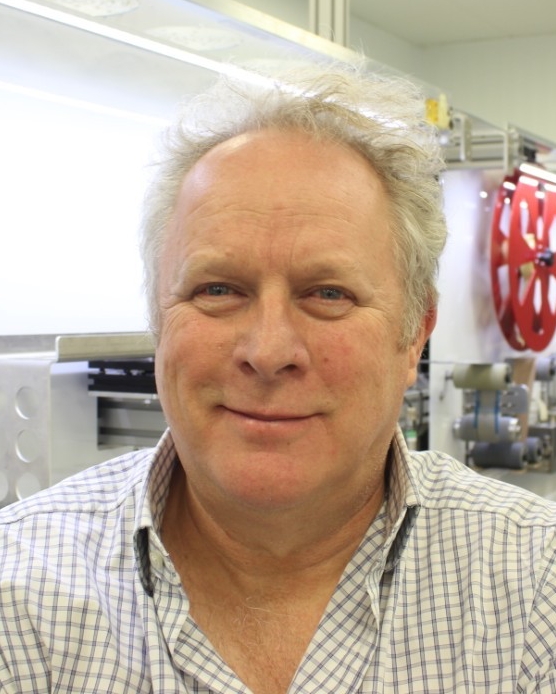Materials
Advanced materials: 2025’s breakthrough year and what comes next in 2026
Reading time: 5 mins
Exploring the work underway to improve carbon fibre composites production and manufacture, the potential of carbon fibre composites in net zero technologies and the innovations addressing their costly production and carbon footprint
Carbon fibres could be the solution to a lot of the materials challenges to providing energy sustainably, but they do come at a cost. Composites made with these materials combine light weight, strength, and stiffness. These properties enable such things as longer wind turbine blades and stronger containers for pressurised low-carbon fuels like green hydrogen, as well as lighter automotive bodies and planes, countering the additional weight of battery-powered transport. Carbon fibre composites would be a sustainable technology engineer’s dream – were it not for the carbon footprint of their production.
From the fossil-fuel-based chemical precursors to the energy-hungry reaction temperatures, carbon fibre production is an environmentally profligate process.

“It’s only really been the last 10 years that people have looked at it and gone, oh, it’s not a very good environmental material,” says Gary Owen, CEO of Lineat Composites, a start-up company looking into recycling carbon fibre composites. According to Lineat, carbon fibre production releases 20 times as much CO2 per kilogram as steel.
The current status of carbon fibre composite development poses an exciting challenge for materials scientists looking to find more sustainable precursors, discover more energy-efficient chemical processing methods, and establish rigorous methodologies for reliably achieving the desired fibre properties not just from virgin but also recycled carbon fibres. However, while the potential payoffs are substantial, the landscape for innovation is complex.
“The reality is that carbon fibre production is a very expensive thing to do,” says Tim Young, chief technologist at the National Composites Centre (NCC) in the UK, who suggests that setting up a production line can cost as much as £200 million.
While this level of capital expenditure may also be ripe for cost-cutting innovations, it is a sum that will prompt commercial players to seek substantial assurance that the production line will not only work but scale successfully. Nonetheless the huge potential of the material has attracted avid interest among research groups in Australia, the US, Europe, Japan, and Canada. In the UK, following a decades-long hiatus in fibre production, various developments are afoot that may rekindle the sector, from electromagnetically induced resin curing that could reduce energy costs to carbon fibre reclamation and recycling techniques, as well as experiments with potential sustainable precursor materials, such as lignin. The race is on to help carbon fibre composites shed their dirty origins.
Carbon fibres are strings, generally 5-10 micrometres wide, of mostly carbon atoms arranged similarly to graphite. They are capable of bearing loads up to 7 GPa without breaking, orders of magnitude stronger than the traditional materials of the industrial revolution such as steel. They are essentially created by cooking off the excess elements from carbon-based precursors.
The first reported carbon fibres were whiskers made from cotton fibres heated in the absence of air, and used for incandescent light bulbs. While interest slumped once tungsten filaments took over for bulbs, experiments with heating under pressure at Union Carbide in 1958 demonstrated that long whiskers of rolled up graphite 1-5 micrometres wide could grow with impressive mechanical properties, reviving interest.
From there came a flurry of patents as people finessed the starting material using rayon (a little like cellulose), pitch from coal, and then, in the 1960s, polyacrylonitrile (PAN), which confers significant mechanical advantages over the resulting fibres compared to those grown from rayon or pitch.

In the UK, work on carbon fibres made from the PAN fibres, produced by the then global leader in man-made fibre, Courtaulds, began at the Royal Aircraft Establishment in Farnborough, which licensed products to Rolls-Royce for jet planes, as well as Morganite Modmor and others. However, exploiting these materials’ strengths in functioning engineering structures was far from straightforward. What is more, political events significantly adjusted investment priorities, according to “A critical review of carbon fibre and related products from an industrial perspective”, written in 2022 by Ton Peijs, professor of polymer engineering and head of the Centre for Polymers and Composites at the University of Warwick.
Following the fall of the iron curtain in 1989, the “industrial interest in carbon fibres for military and defence applications diminished strongly in the West,” the review explains. However PAN-based fibres had also been the focus of research by Akio Shindo at the Osaka Technical Research Center, and it adds, “R&D in carbon fibres continued in Japan in the typical ‘Kaizen’ approach; continuous small improvements.”
Following the emergence of a cluster of PAN-based carbon fibre expertise in the country, Japan continues to be a key player in the world carbon fibre market. Today the demands of sustainable technologies such as wind turbines and battery-powered cars have begun to drive a resurgence of interest in carbon fibre across the rest of the world too. However, the main companies actually producing carbon fibres remain concentrated in Japan, the US, and China, with some production also taking place in Germany, Taiwan, Turkey, and South Korea.
In the UK, fibres used to make composites are largely bought in from abroad, a situation that does not sit comfortably with some of the national manufacturing strategies. Young’s work focuses on how to “support resilience and sustainability in UK material supply chains”. He points out some of the problems with what he describes as the “bathtub effect” – common across several materials industries – where the UK produces the chemicals and often the products the materials are made into, but not the actual materials themselves.

One drawback is that certain materials may carry restrictions, such as the US International Traffic in Arms Regulations (ITAR) associated with materials deemed to have military relevance. Products made from materials covered by ITAR can only be sold to countries condoned by the US, regardless of the country of origin for the actual product.
Changes in the chemical market can also have knock-on effects if, for example, a country finds it has a local company that will produce a chemical, which will cause imports of that chemical to drop. Major international events like COVID and attacks in the Suez Canal have also hit supply chains and manufacturing hard.
“We’ve got such an international supply chain that it takes one thing to tumble it all, and suddenly the prices lock in,” says Young.
At the same time materials manufacturing is a competitive environment, where for instance China now already has a lot of capability for producing cheaply at volume. As a result, some tough calls need to be made as to which materials are important. Among the materials ranked most important, particularly in view of net zero engineering materials requirements, are carbon fibres.
Young says, “[Carbon fibre is] the most appropriate for most high-performance structures.”
Cooking PAN to produce carbon fibres involves multiple stages that progressively ramp up the energy cost from an initial “stabilisation” in air at 200-400˚C, then a subsequent carbonisation in the absence of air to remove anything that is not carbon at around 800-1500˚C, before ramping up the temperatures to 2500˚C to impose a layered, honeycomb-shaped, crystalline arrangement of atoms. Subsequent surface treatments then improve adhesion to a polymer matrix when forming a composite.
As Ton Peijs and co-authors highlight in their review, “the properties of the resultant carbon fibres are dependent on their crystallinity, crystalline distribution, carbon content, molecular orientation, and the proportion of defects.”
While the relationship between different microstructure and composition characteristics and the resulting properties may not be straightforward, all these factors need to be taken into account when attempting to improve the economics and sustainability of the process.
Young tells BI Foresight that part of the challenge is actually removing some of the mystery from the production. Innovations in fibre production range from how the fibre is cooked to the precursor material itself.
“Probably about half of the environmental impact is in the precursor,” says Young, highlighting the promise of materials like lignin as potential sustainable alternatives to fossil fuels. He explains how in practical terms the fibre production can involve touching and “eyeballing” fibres strung out like a clothesline to gauge whether the sag, colour and other features seem about right. Here better metrology and simulation could help, by digitally predicting the outcomes of different innovations and by optimising processes and the design and manufacture of products with fewer prototypes, less waste, and more consistent quality.
However, composites are more than the sum of their parts, and a lot of the engineering expertise goes into manipulating how the parts come together – in this case how the carbon fibres are embedded in a matrix material, which is often epoxy. When the fibres in the composite material are highly oriented in one direction, designers can manipulate the angles of the fibres to optimise the material.

However as Lourens Blok, CTO at Lineat, points out, traditional continuous fibre composite can be difficult to manufacture as the fibres are hard to stretch, forming complex geometries that lead to wrinkles and creases.
Kevin Potter, professor emeritus of the University of Bristol, and Hana Yu, now a lecturer in future manufacturing at the University of Bath, found a way around this by not only exploiting the greater formability of shorter fibres, but also by finding a way of aligning them that is particularly well suited to shorter fibres.
Their approach sends a jet of dispersed fibre in liquid form between two parallel plates. By carefully tuning the jet, the fibres fall between the parallel plates and onto a moving filter belt where the water is extracted for re-use. The fibres are physically confined between the parallel plates which gives them a high level of alignment again. The pair patented the approach in 2013, and work on the High Performance Discontinuous Fibre (HiPerDiF) technology continues at the University of Bristol with Ian Hamerton, professor of polymers and composites, as academic lead.
“HiPerDiF is material agnostic and has been demonstrated with fibres other than carbon,” says Hamerton, listing some of the alternatives including glass, basalt, and various cellulosic fibres, as well as hybrids containing more than one type of fibre. “Additionally, we have examined a range of biobased matrices and matrices that might be more readily reclaimed at end of life.”
Finding ways to recycle the composite’s resin matrix, however, remains a challenge.
Potter worked on several alignment technologies that date back to the 1980s, when he was already aware of the potential for recycling. As Hamerton explains, further funding from the Engineering and Physical Sciences Research Council (EPSRC) was then secured to develop and provide proof of concept of how HiPerDiF might be used for reclaimed carbon fibres to manufacture “second life composites”. Work pivoting the technology towards recycling carbon fibres led to the spinout company Lineat, where the technology has been further developed into their aligned formable fibre technology (AFFT).
Carbon fibres cannot be melted like traditional metals can so they tend to be shredded. ”When you try and recover the fibres after shredding, you end up with a woolly carbon fibre mess with no orientation,” explains Blok. “This limits the re-use value of carbon fibre.”
At present 90% of carbon fibre composites end up in landfill, and re-use options in industry are limited. The main options have been to use fibres as a filler compound or to process the fibres into a veil material in which the fibres are randomly orientated like the wool fibres in a felt. However, this only retains about 30% of the original strength, as composites get their real strength when the fibres are aligned.
“That is what we’re doing at Lineat,” adds Owen. “We take bags of recovered woolly carbon fibres and realign them back into highly aligned fibre tapes.”
The resulting aligned reclaimed fibre material retains up to 85% of the original continuous fibre material performance, as well as being formable with vacuum moulding processes, because as Blok points out, the aligned fibres can move relative to each other, allowing the material to stretch.
“This forming advantage allows you to make new shapes in a single forming operation without defects that cannot be done with virgin continuous fibre materials.”
When the alignment technology was first developed by Potter and Yu, it was a lab scale process, and it would take two people more than a day to produce 100g of material. One of the main bottlenecks was the need to manually mix and disperse fibres in water without any flocs (fine particles suspended in water, which are brought together into larger clumps to form mesh-like structures).
“Fibres are like hairs, so they can easily clog up and floc together,” explains Blok. “Once you have a floc in the realignment machine it can block the machine or end up in the tape as a defect.”
The team at Lineat automated the mixing process so that the fibres could be mixed quicker while avoiding flocs. They have also worked on detecting and removing flocs in the process. Lineat is now realigning fibres at a rate close to 1kg/hr, and creating composites with realigned reclaimed fibres that retain about 75% of the strength of similar virgin carbon fibre composite material. The team estimates the entire recycling process from recovery to realignment releases around 8kg of CO2/kg, depending on how the fibres are reclaimed. This compares with around 30kg of CO2/kg released to produce virgin carbon fibre.
There are applications, such as pressure vessels for storing compressed hydrogen, which require the full mechanical strength and stiffness of the continuous fibre. Work is also underway to recycle carbon fibre composites that retain the fibre length.
B&M Longworth in Lancashire originally patented their DEECOM® technology to clean waste polymers from filters and manufacturing equipment, but found they could repurpose the process to remove the polymer matrix from carbon fibres, so that they could be recycled without shortening the fibre itself. The process is based on a kind of high-pressure weathering system whereby compressed steam infiltrates the material and breaks it apart as it boils once the pressure is removed. Engineers at the NCC were then able to work with Cygnet Texkimp, a company in Cheshire that focuses on fibre handling, to produce new pressure vessels for hydrogen storage.
Although so far most R&D around carbon fibres focuses on their tensile strength, their failure under compression can be a limitation for a number of applications in aerospace and civil engineering, and this is the focus of work at NextCOMP. The team there brings together researchers from the University of Bristol and Imperial College London who aim to demonstrate the value of “hierarchical design”, which considers the structure at each scale from the molecular structure, and how each molecule comes together in a fibril, up to the final composite fibre structure.
Key to all these manufacturing technologies is the ability to demonstrate that the process scales. Lineat has already demonstrated a 50x production improvement, and it is currently working on expanding that to tonnes per year. However, demonstrating the viability of a manufacturing technology at an industrial scale poses challenges that can easily kill off potential innovations.

As well as initial funding from the EPSRC to develop and provide proof of concept, work on the technology used additional funds, including Technology Pull Through via the NCC, which again led to further university, NCC and venture capital investment to up-scale and further mature the technology through Lineat.
“Without the initial investment by EPSRC and the follow-on support via NCC, this would not have happened,” says Hamerton. “There’s loads of academic work that’s trapped in the material space because it simply can’t get scaled,” adds Young, who would like to see more support provided for manufacture and production. He highlights how difficult it can be to make an investment case for processes that have only been demonstrated at an academic scale. Extrapolating higher throughput scenarios from lab scale demos provides flimsy evidence for an investor who just wants to make money.
“Those early orders of magnitude going from grams to 100g to a kilogram are really, really hard steps,” says Young, as he describes the challenges in scaling production that the new R&D line aims to support. “That’s the biggest innovation gap in the UK.”
Carbon fibre composites are materials made by combining carbon fibres (very strong, lightweight threads) with a binding material, usually plastic. These composites are useful because they are incredibly strong but very light, making them perfect for things like wind turbines, cars, and aeroplanes.
Carbon fibre composites are seen as key to building more sustainable technologies, such as:
Wind turbines with longer, more efficient blades.
Cars and planes that are lighter and use less fuel, which helps reduce emissions.
Hydrogen fuel containers that can store pressurised, low-carbon fuels more safely.

Anna Demming loves all science generally, but particularly materials science and physics, such as quantum physics and condensed matter. She began her editorial career working for Nature Publishing Group in Tokyo in 2006, and has since worked within editorial teams at IOP Publishing, and New Scientist. She is a contributor to The Guardian/Observer, New Scientist, Scientific American, Chemistry World and Physics World.
Quantum
Reading time: 10 mins
Quantum
Reading time: 10 mins
Quantum
Reading time: 11 mins
Robotics
Reading time: 1 mins
Quantum
Reading time: 3 mins